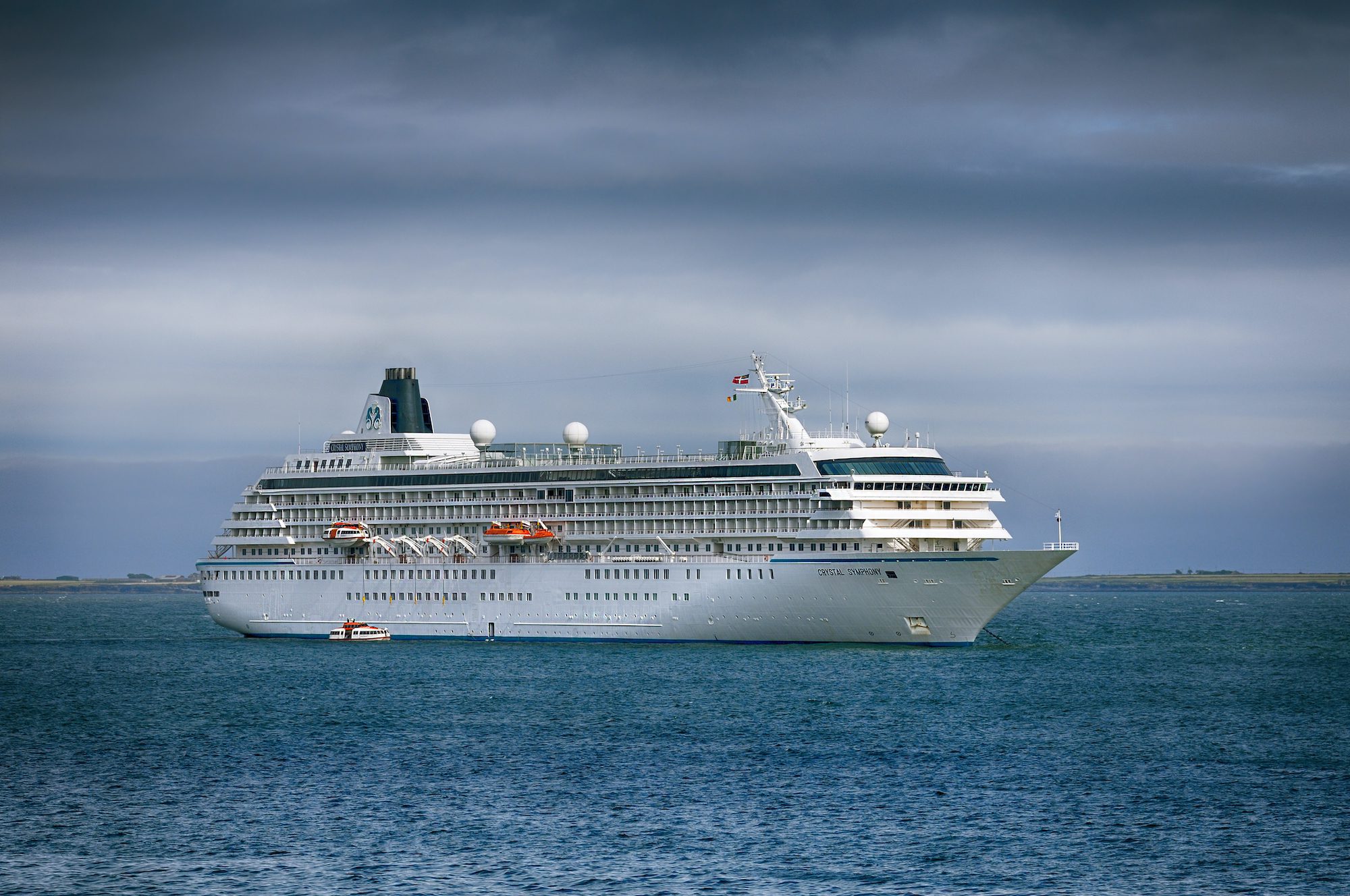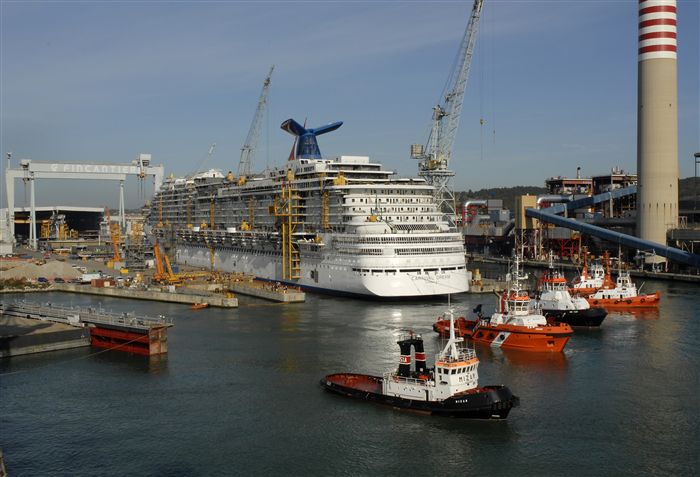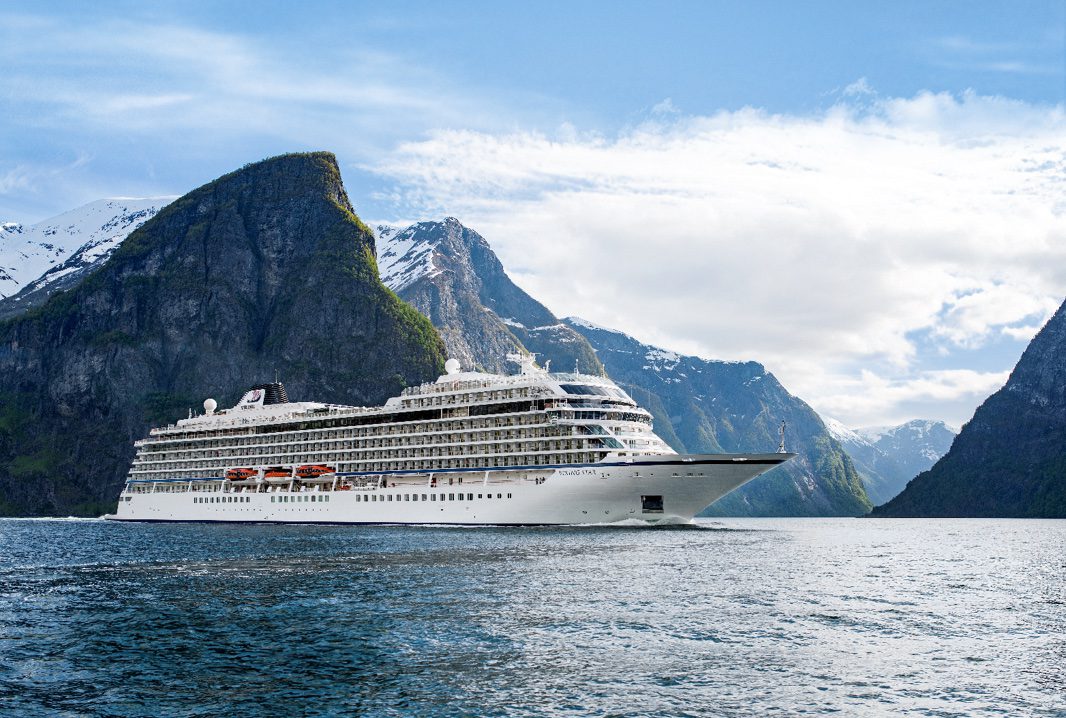By Fran Golden (Bloomberg) —
Last week, the most-awarded luxury cruise line in the industry, Crystal Cruises, unceremoniously shuttered its doors, with not a word to consumers nor travel agents. Abandoned by its parent company Genting Hong Kong Ltd., it leaves a trail of debt—to travelers, who’d put down payments and deposits for sailings into 2024; to agents owed commissions; to employees in offices; to crew still on ships; and to unpaid vendors.
Although $4.6 million in outstanding fuel bills were central to Crystal’s demise, the signs of trouble appeared weeks earlier in a string of dominoes triggered by the insolvency of a German shipyard. Through it all—a petition to wind up the company, layoffs, a halt to future sailings—Hong Kong was still assuring Crystal employees that the brand was not in jeopardy. In fact, passengers were still on ships.
By early February, when the line’s new 200-passenger expedition ship, the Crystal Endeavor, disembarked its final passengers in Ushuaia, Argentina, the cash had run dry.
“Genting HK effectively washed their hands of Crystal when they filed liquidation in Bermuda,” says Jack Anderson, who served as president of Crystal Cruises until the company dissolved its operations on Feb. 11. “At that point our relationship with Genting was effectively severed, and we were cut loose to fend for ourselves,” he tells Bloomberg.
Read Also: Bankrupt Cruise Line’s Unfinished Ship Attracts Investor Interest
Industry consultant David Giersdorf, whose Global Voyages Group is based in Seattle, says the demise of Crystal comes at a time when most cruise companies seem to be turning the corner from the Covid-19 pandemic. “This is—wow—very strange timing,” he says. “It’s weird that a shipyard issue in Germany triggered the demise of a multibillion-dollar entity.”
A Titanic Collapse
Crystal Cruises was a product of the highfaluting late 1980s, a prestige line started by a former Princess Cruises executive with financial support from Japan’s NYK. The line launched its first new ship, Crystal Symphony, in 1995, and followed up with Crystal Serenity in 2003. Both were over-the-top floating palaces, with no expense spared.
Guests drank copious amounts of complimentary Champagne and feasted on sushi and miso-marinated black cod in Master Chef Nobu Matsuhisa’s onboard restaurants. Butlers brandishing silver trays serviced penthouses and suites. For those luxuries, Crystal’s fares could easily exceed $1,200 per person, per day.
While there were rumors the line had not registered a positive Ebitda since 2017, the cruise line was a crown jewel for Genting Hong Kong and its billionaire casino magnate owner, Lim Kok Thay. It came with a loyal following of big-spending travelers, the majority from the U.S., and Crystal Cruises was forecasting a profit for 2020—before Covid hit.
On its website, Crystal Cruises still boasts of its many Conde Nast Traveler’s Readers’ Choice Awards and No. 1 spots on Travel + Leisure’s World’s Best Awards—recognition it earned annually for nearly 30 years.
After Genting Hong Kong purchased the line in 2015 for $550 million, it launched an ambitious expansion plan that added two planes, a Boeing 787-8 and Boeing 777-200, for private air flights; a yacht for exploring the Seychelles; five luxury river ships (of which four were newly built); and an expedition ship capable of reaching such remote and impenetrable places as Antarctica.
Along the way, potential buyers courted the brand, making offers as recently as fourth quarter 2021. One of the bidders was Italian billionaire Manfredi Lefebvre d’Ovidio, flush with the proceeds from the sale of his ultraluxury Silversea Cruises Ltd. to Royal Caribbean Group.
“Crystal could have been a subsidiary or shopped by privately held companies,” Giersdorf says. “You have to ask why the larger Genting Group let this occur—maybe to reorganize assets? It’s just odd the way it happened and how quickly it happened.”
A Bank Account of Zero
Consumers and travel agents are caught in the crosshairs.
Crystal is currently responsible for more than $100 million in customer deposits and payments, all held in reserve accounts under the control of various credit card companies.
Most future itineraries were paid by credit card, which will make for easier refunds, says Anderson. Customers who paid in cash may not be as lucky, and those who had paid fully for sailings that were cancelled in 2020 or 2021 but rolled those funds into new bookings are completely out of luck; any credits are now worthless.
Beyond that, travel agents are owed 10% to 16% commissions on each itinerary they sold. The time spent untangling the logistical messes on behalf of their clients constitutes an additional cost they can never recoup.
For now, at least, the cruise line’s website is still up and will be used to post information from a court-appointed assignee on how consumers can start that refund process.
It’s unclear, however, what assets Crystal has left, beyond computers and office furniture, some bonds, those reserve accounts, and whatever marketing value lies in its customer, travel agent, employee, and crew databases. The company’s fleet, as it turns out, was not owned by the cruise line but amounts to secured assets of preferred creditors.
On Feb. 11, the last day the office was operational, Anderson says, none of it was in liquid cash that Crystal could use to keep operating. “Ultimately, we ended up with a bank account of zero.”
Sales and Scrapyards
So far Lim, who stepped down as chairman and chief executive officer of Genting Hong Kong in January, seems to have walked away unscathed, though he still holds 75% of Genting Hong Kong’s shares. In a signal that he still has ambitions in the cruise industry, he’s among the bidders looking to buy a still-unfinished, 1,122-foot megaship that was being built in Genting’s German shipyard for another of the company’s lines, Dream Cruises Holding Ltd., which has also filed a winding up petition.
Outside the company, luxury competitors such as Silversea, Regent Seven Seas Cruises Inc., and Seabourn (owned by Carnival Corp.) now have access to the high-end clientele that Crystal is leaving behind. Regent, in particular, has jumped to seize the opportunity, reaching out to Crystal guests and travel agents with offers to help them get rebooked on its ships.
As of this week, the 848-passenger Crystal Symphony and 980-passenger Crystal Serenity sit anchored off Freeport, Bahamas, under arrest as a result of the unpaid fuel bills. The Crystal Endeavor was last spotted in Montevideo, Uruguay, and is expected to be arrested by vendors owed money. All three are now being managed by V.Ships Leisure, Bloomberg has confirmed.
For Crystal’s crew, currently stranded on the ships, the saga may continue. If the company aims to sell any of those vessels, having a crew to maintain them will help.
Before the line shutdown, Monty Mathisen, editor of Cruise Industry News, was predicting potential buyout prices for the Crystal Cruises brand of $1 billion to $2 billion. The story now looks significantly different. Much of that value had to do with its brand equity and loyal customers. The ships, he says, are not likely to fetch more than $400 million for the secured creditors.
The expedition ship is the most valuable at $200 million, he estimates. The other vessels will fetch substantially less—maybe $50 million for Symphony, $100 million for Serenity, and $18 million each for the newbuild river ships. Given that Crystal Symphony is 27-years-old, though, it could just end up in a scrapyard.
“Every employee is overwhelmed with sympathy and thank-you’s for travel agents and our guests in our shared, just unbelievably tragic, sadness,” says Anderson, speaking with emotion. His 100 or so land-based employees were given 48 hours notice before offices were shut down and their paychecks cut off.
“There wasn’t even time for an official statement,” Anderson says. “What occurred minute by minute over the last two weeks could fill a book.”
© 2022 Bloomberg L.P.
Sign up for our newsletter

 Join The Club
Join The Club











